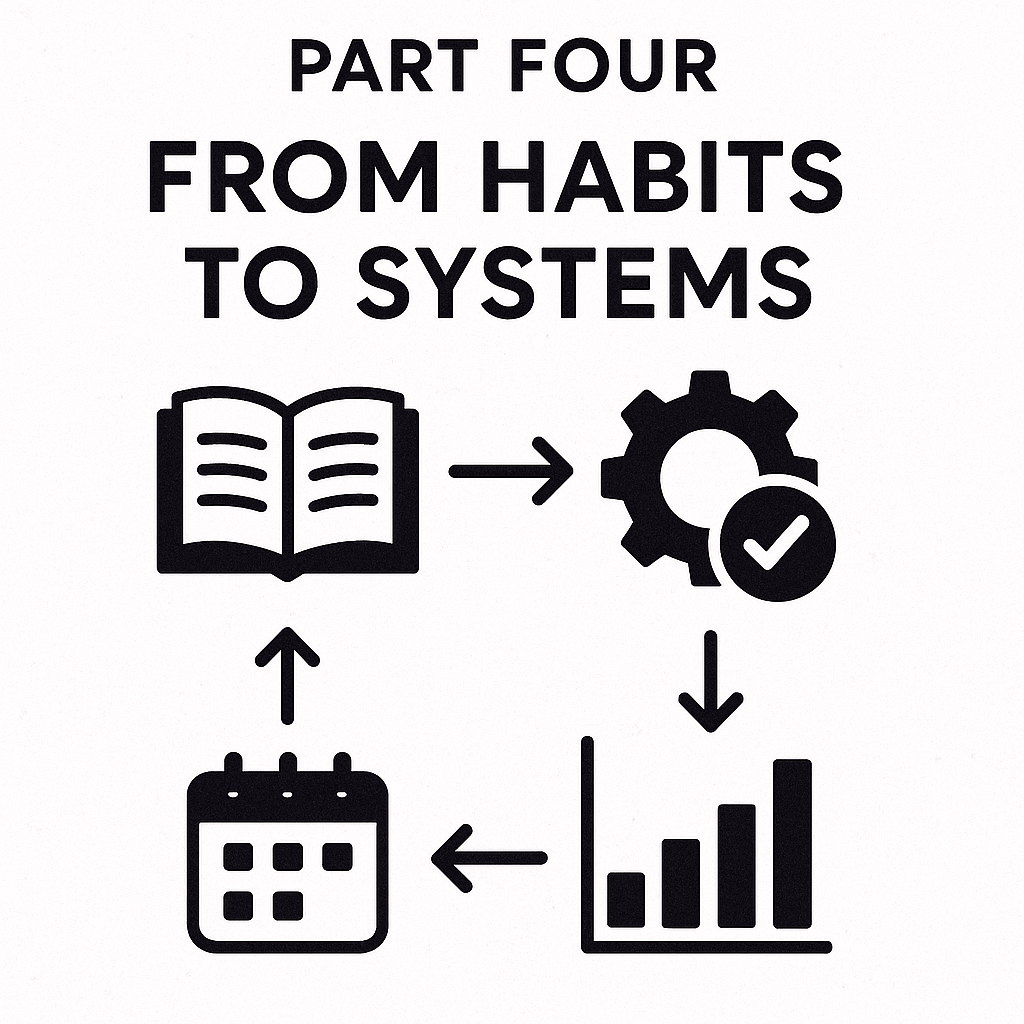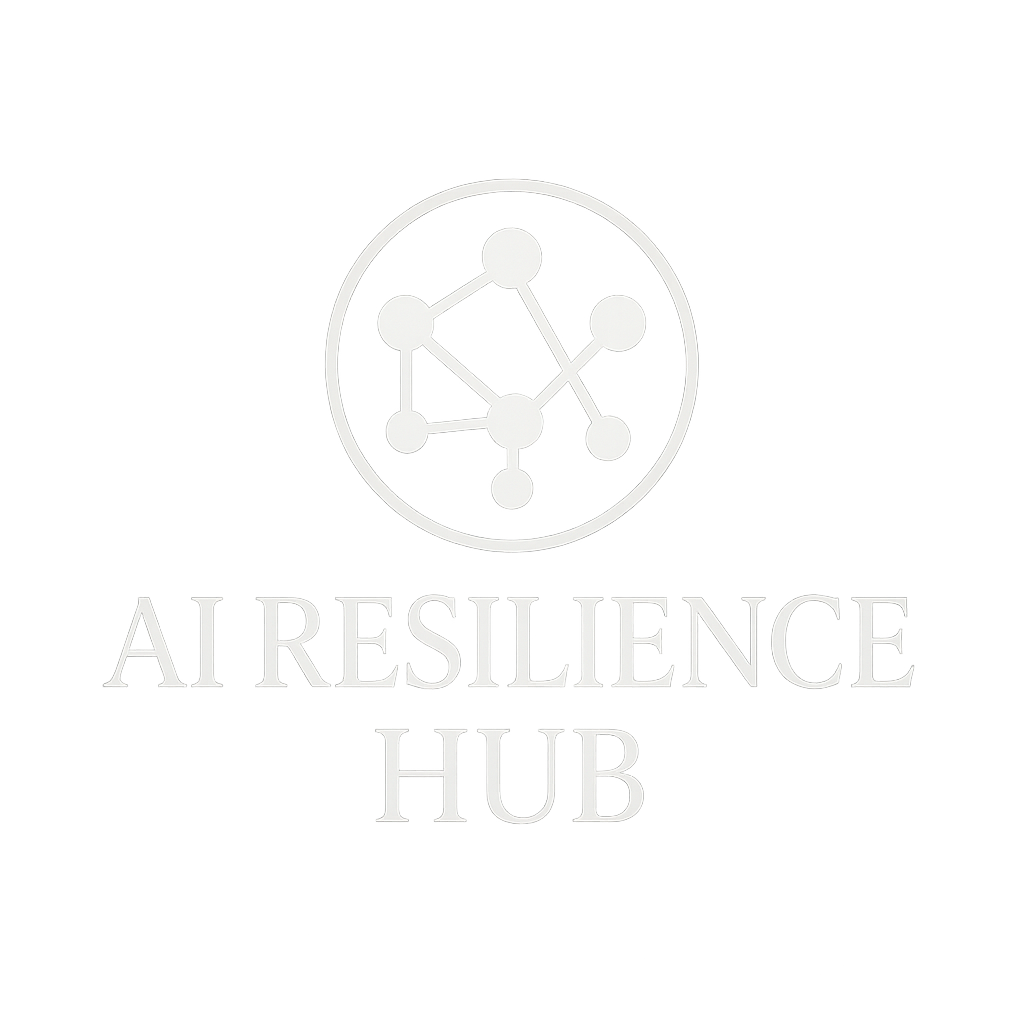Part Four: From Habits to Systems

In Part Three, we explored the practical tools and daily habits that help you stay grounded in uncertain times, simple actions that strengthen resilience and keep fear from running the show. But habits, as powerful as they are, can still be fragile. A bad day, a crisis, or even just fatigue can knock them off course.
That’s where systems come in.
Why Systems Matter
Habits rely on willpower. Systems make resilience automatic.
- A habit says, “I’ll try to read 10 pages every night.”
- A system says, “The book sits on my pillow so it’s the last thing I touch before bed.”
Systems don’t care about mood swings or motivation levels. They keep you on track even when life gets chaotic.
Designing Your Resilience Systems
To turn scattered habits into something sustainable, focus on building systems in four layers:
- Environment – Shape your space so it works for you, not against you. (Healthy food in sight, distractions out of reach.)
- Automation – Use tools, reminders, and rules that reduce friction. (Savings on autopilot, calendar blocks for recovery time.)
- Feedback – Track progress in simple ways so you can adjust without guesswork. (Journals, health data, weekly check-ins.)
- Integration – Align your habits with bigger goals. (If your “why” is health, your system links sleep, nutrition, and movement instead of treating them as separate.)
Scaling Outward
Once your personal systems feel stable, the next level is scaling them beyond yourself:
- In family: Shared routines, like tech-free dinners or Sunday planning sessions.
- In business: Review structures, automation, and decision frameworks that keep teams aligned.
- In community: Resource-sharing and support systems that turn resilience into something collective.
This is how resilience compounds—it moves from being about you surviving the storm to all of us navigating it together.
The Challenge
Take one habit from Part Three and ask yourself: What would it look like as a system? Then build the smallest version of it today.
That small upgrade is how you stop reacting and start proactively shaping the life and future you want.
What to Expect in Part Five
In Part Five, we’ll take resilience beyond the personal level and explore how to connect your systems into networks of resilience—how families, teams, and communities can share strength, adapt together, and build a future where no one faces disruption alone.
